Town halls have been around for a very long time. In fact, the very first town hall in the United States took place in Dorchester, Massachusetts, in 1633, where residents met weekly to discuss and decide on local affairs. The practice spread throughout New England and the rest of the country, and some form of the town hall meeting has existed ever since.
You’ve likely experienced a variation of this idea, especially during election season. When you hear the phrase “town hall meeting,” you might imagine a political gathering with voters asking candidates questions about their platforms, a city meeting in which public officials discuss current or upcoming legislation and get feedback from local citizens, or some other kind of public meeting in which community members and elected or appointed officials conduct an open dialogue about issues of the day and exchange ideas and solutions.
But the town hall format isn’t just for political or administrative meetings. Colleges and universities use it to communicate with students, parents, and alumni about campus operations and activities. And in the corporate world, companies use the town hall format to share their initiatives and business results and to create opportunities for discussion among leadership and employees.
Of course, town hall meetings don’t have to take place in an actual town hall. You can also find them in schools, churches, municipal buildings, and libraries — at least in the pre-COVID-19 world.
But as we all know, the pandemic has changed a few things, and town hall meetings are no exception. Now, virtual town hall meetings have mostly taken the place of their in-person counterparts, and groups of all kinds — from city governments to colleges and universities to companies large and small — have adopted the virtual town hall model to share updates, discuss how to make meaningful progress on goals, and engage their respective communities.
What’s different about a virtual town hall meeting
Now that many companies have shifted much of their operations to remote work for the foreseeable future, it’s important for them to find an effective way to conduct organization-wide meetings.
Enter the virtual town hall meeting.
A virtual town hall meeting in a corporate setting is a company-wide event in which leadership, employees, and other key players come together online to do what the standard in-person corporate town allowed them to accomplish.
After all, companies still need to align everyone to the same north star, communicate key performance indicators, share important wins, encourage conversation between employees and management, and create a sense of community — all of which a town hall meeting is designed to do.
Virtual town hall meetings are essentially the same as their face-to-face forebears, except they happen using videoconferencing software like Zoom, Microsoft Teams, GoToMeeting, Cisco Webex, and Google Meet.
Benefits of virtual town hall meetings
Just like their in-person counterparts, virtual town hall meetings have many benefits:
- They give employees a voice by allowing them to address concerns.
- They boost team morale.
- They help connect employees with leadership through two-way dialogue.
- They help align everyone in the organization to the company’s mission, vision, values, and goals.
- They showcase and enhance company culture.
- They reinforce a sense of community and a feeling of “we’re all in this together” among leadership and colleagues.
And because they’re virtual, they offer a few additional advantages:
- They’re more cost-effective than in-person events.
- The right videoconferencing platform gives you access to data and analytics that allow you to track participation, measure audience engagement, and verify attendance.
- They can enhance employee engagement through the use of polls, chat functionality, Q&As, and surveys.
- You can record them to share later with those who may have missed the original live presentation.
- You can repurpose the meeting content into blog articles, social media posts, video clips, and other content assets.
All of that’s great, but as you might imagine, translating a successful in-person meeting into a virtual one comes with its own set of challenges. That’s why we’re giving you 19 tips for conducting an effective virtual town hall meeting.
(While we’re mostly concerned with corporate virtual town hall meetings in this article, you can adapt the tips here to suit other kinds of organizational gatherings as well.)
How to hold a successful virtual town hall meeting: 19 tips
There are three phases of presenting a virtual town hall meeting: before (preparing for the meeting), during, and after the meeting. We’ve broken down the tips below into these three phases.
Before the meeting
1. Choose and test your videoconferencing software
There are many options to choose from when it comes videoconferencing platforms, and you can find lots of advice on choosing the best one. In fact, a Google search on the term “best videoconferencing software” returns over 30 million results.
Obviously, Zoom is a popular choice, but whatever you decide to use, be sure to test the technology beforehand. Do a test session or dry run with everyone involved in the presentation at least once before event day to check video and audio quality and to confirm everyone knows how to share their screen, use the chat function, and mute themselves.
2. Select the appropriate date and time zone
If your company has a geographically dispersed team, it’s not going to be easy to schedule a day and time that work for everyone. The beauty of an online meeting is that you can record it, so anyone who can’t make it can view it later.
That said, it’s important to try to choose a day and time when most people can participate in the live meeting. That way, they can take advantage of the opportunities for discussion among leadership and employees and fully participate in the community-building and morale-boosting aspects of the virtual town hall event.
3. Plan the meeting agenda, choose your speakers, and come up with a good title
Nothing is worse than a meeting that meanders without a clear direction or purpose. It’s much easier to keep moderators, presenters, and attendees engaged and attentive if you follow a set schedule and agenda.
Communicate your meeting agenda to all participants beforehand, including the topics the virtual town hall meeting will cover, the speakers or presenters and their bios, the speaker schedule, planned breaks and their duration, the length and format of the Q&A session, and any interactive elements, like polls or quizzes. Setting expectations in advance will help everyone stay engaged, on topic, and on schedule.
It’s also helpful to choose a good title for the meeting or presentation to whip up enthusiasm and get people excited about attending. Think about it — would you rather attend something called “Mandatory Company-Wide Meeting to Discuss Goals, Initiatives, and Business Results” or “Acme Company Virtual Town Hall: Conversation, Community, and the Path to a Brighter Future”?
OK, I just made that up on the fly, and it’s not that great, but it’s definitely more enticing than a “mandatory company-wide meeting.” As the meeting planning team is setting the agenda, they can also brainstorm compelling titles for it.
4. Ask attendees to submit questions in advance
This will help streamline things once you get to the Q&A portion of the meeting. You can select frequently asked questions that represent the most important topics for discussion, and with the time left before the close of the meeting, you can call for additional questions from attendees.
Having participants submit questions in advance allows speakers to prepare for the most topical and important questions beforehand so they can answer them thoughtfully and succinctly — without being caught off guard.
5. Promote the meeting in advance, send invitations, and ask attendees to register
Share information about your virtual town hall at least several weeks before the event — if not sooner — so employees can save the date. This info sharing should come long before the actual invitation to register. You can send pre-event update emails, post meeting info on your company’s intranet, ask team leaders to mention it to their direct reports, and so on.
That way, when the actual invitation arrives, employees are expecting it and have likely already made a note of the meeting in their calendars.
Next comes the invitation to register. Requiring registration via Zoom is a great idea because you’ll capture registrants’ email addresses and be able to communicate with them consistently in the weeks leading up to the event and follow up with them afterward.
The calendar invitation via Zoom will automatically include the day, date, and time, plus the meeting link and access code or sign-in PIN. You may also want to add a few details about the meeting agenda to this invitation email.
6. Assign roles
To make sure everything runs as smoothly as possible, get your leadership team and other speakers/presenters together in advance to assign roles and designate a moderator or facilitator to keep things on track. Who’s going to handle interactive elements, such as polls or quizzes? Who’s going to monitor the chat Q&A? Who’s going to serve as tech support?
The moderator role is an especially important one. Choose this person carefully. They’ll be greeting attendees, breaking the ice at the beginning of the meeting, assisting speakers as needed (make sure the moderator is prepped with biographies of each speaker beforehand), and in general, keeping things on schedule and moving along. Ideally the person in this role is confident, upbeat, and high-energy.
7. Practice
Practice means two things: doing a technical run-through to work out any kinks in the video, audio, and other tech elements of the presentation, and having your speakers rehearse their material. Moderators, tech support people, and any others who have a role to play in the event should also be part of the dry run or rehearsal sessions.
During the meeting
8. Grab attention from the start with an icebreaker
It can be challenging to keep employees engaged in a virtual meeting, especially in these days of rampant “Zoom fatigue.” An enthusiastic moderator and a fun icebreaker activity can kick things off to an energetic start.
One icebreaker activity to consider is asking thought-provoking questions. For example, “What’s the best thing that happened to you today?” or “Where’s the first place you’re going to travel once COVID-19 restrictions are lifted?” Or you can ask a work-related question like, “What’s one thing you’ve done at work recently that makes you feel accomplished?”
Other icebreaker options include informal socializing for the first 10–15 minutes, celebrating personal or professional highlights, introducing new hires, or simply asking people how they are and how things have been going for the last few weeks.
9. Celebrate company and employee wins
Recognizing and acknowledging employees for the good work they do is a proven morale booster, and a virtual town hall is the ideal opportunity to show employees how much you appreciate them.
Build in a dedicated portion of your town hall to spotlight employee achievements or even conduct a brief awards ceremony. You can also use this time to highlight company wins and milestones. You may want to weave in company and employee wins throughout the town hall so everyone stays engaged until the end.
10. Don’t forget to share what’s not going well
No company experiences puppy dogs and rainbows all the time. No matter how great things in your company look today, there are always opportunities for improvement.
You don’t have to share a litany of problems — just address a few areas that need more attention, ask for feedback on the current challenges the company faces, and reinforce the idea that if everyone works together, you can turn around any issues.
11. Include a range of speakers
While it might be tempting to have your CEO launch the meeting and do most of the talking, that can get very boring, very fast. A better approach is to incorporate department leaders into the mix, as well as speakers from different management levels, so everyone feels represented and attendees get a better sense of what’s happening throughout the company.
To boost engagement, consider letting the sales team share customer success stories and recognize employees who were instrumental in these customer wins — if you haven’t already done this in the employee achievements portion of the town hall.
12. Plan for several breaks throughout the meeting
The number of breaks will depend on the duration of your town hall, but incorporating periodic breaks to give participants time to stretch their legs, go to the bathroom, or grab water or other refreshments is nonnegotiable. A five-minute break every 30 minutes is ideal; a longer break for lunch if the town hall stretches to half a day or longer is a no-brainer.
13. Include time for a Q&A
We talked before about letting participants submit questions in advance, but it’s also important to incorporate a real-time Q&A as well so everyone feels heard and valued. Some employees may have missed the original prompt to submit questions beforehand, and others will formulate their questions based on the topics discussed the day of the virtual town hall.
Remember that town halls are meant to encourage two-way conversations, and a real-time Q&A presents the opportunity to have an honest and open company-wide dialogue. Most videoconference tools have a chat and/or Q&A function to make this straightforward.
14. Don’t forget the Q&A follow-up
If you get more questions than anyone can reasonably answer during the original Q&A, offer an additional opportunity for your employees to get answers to their questions. You can send out a company-wide email to ask for additional questions or post a prompt on your company’s intranet, then send an audio or video recording that answers these questions.
15. Conclude with next steps
Now it’s time to wrap up the town hall with key takeaways, important lessons and opportunities, and action items to follow through on. What are company priorities for the next quarter and the next year? What areas of improvement need the most attention? What’s been going well that your company could double down on? How can employees contribute to these company goals and priorities?
After the meeting
16. Present a feedback survey
You can do this at the end of the town hall while everyone is still online or a few days later. If you run a survey at the end of the town hall, be sure to make it short so everyone can complete it quickly. Giving employees a chance to share feedback will boost morale and give you great pointers for improving your next company town hall.
17. Share the meeting recording
You remembered to hit the record button at the top of the meeting, right? Great! Now it’s time to share the recording with employees and other stakeholders, both those who weren’t able to attend and those who were (so they can revisit the material if they want to review key points and takeaways, etc.).
As previously mentioned, you can break out content from the video and audio to share on social media, your company blog, and elsewhere.
18. Thank everyone for attending
You can do this when you send the recording or in a separate follow-up email. You can also use the thank-you email to highlight key points, goals, and takeaways from the meeting and remind everyone about action items for the next quarter or year.
19. Debrief and plan for the next town hall
One or two days after the event, when it’s still fresh in everyone’s mind, call a meeting to discuss what went right and what didn’t work so well, and begin strategizing and planning for your next town hall. Discuss next steps and action items that came out of the town hall debrief, and assign these action items to the appropriate teams or individuals.
You can use the tips above to create your own virtual town hall agenda. A very basic town hall format could look like this:
- After the moderator kicks things off and welcomes people, the CEO and/or another member of the executive team makes opening remarks and gives the main presentation.
- Other leaders and managers share highlights from their respective departments.
- The contributors share final remarks, and the moderator kicks off the Q&A.
Simply incorporate some of the 19 elements above (where appropriate) to build an interactive, lively virtual town hall meeting that gets everyone engaged and on the same page.
An effective virtual town hall meeting is about more than sharing company updates and outlining next year’s goals. It’s also a great way to increase employee morale, celebrate wins, solidify company culture, and align the entire company around collective goals.
Jotform makes collecting registrations for your virtual town hall meeting easy via our virtual event forms. And for your feedback survey after the town hall event, choose from one of over 500 survey templates.

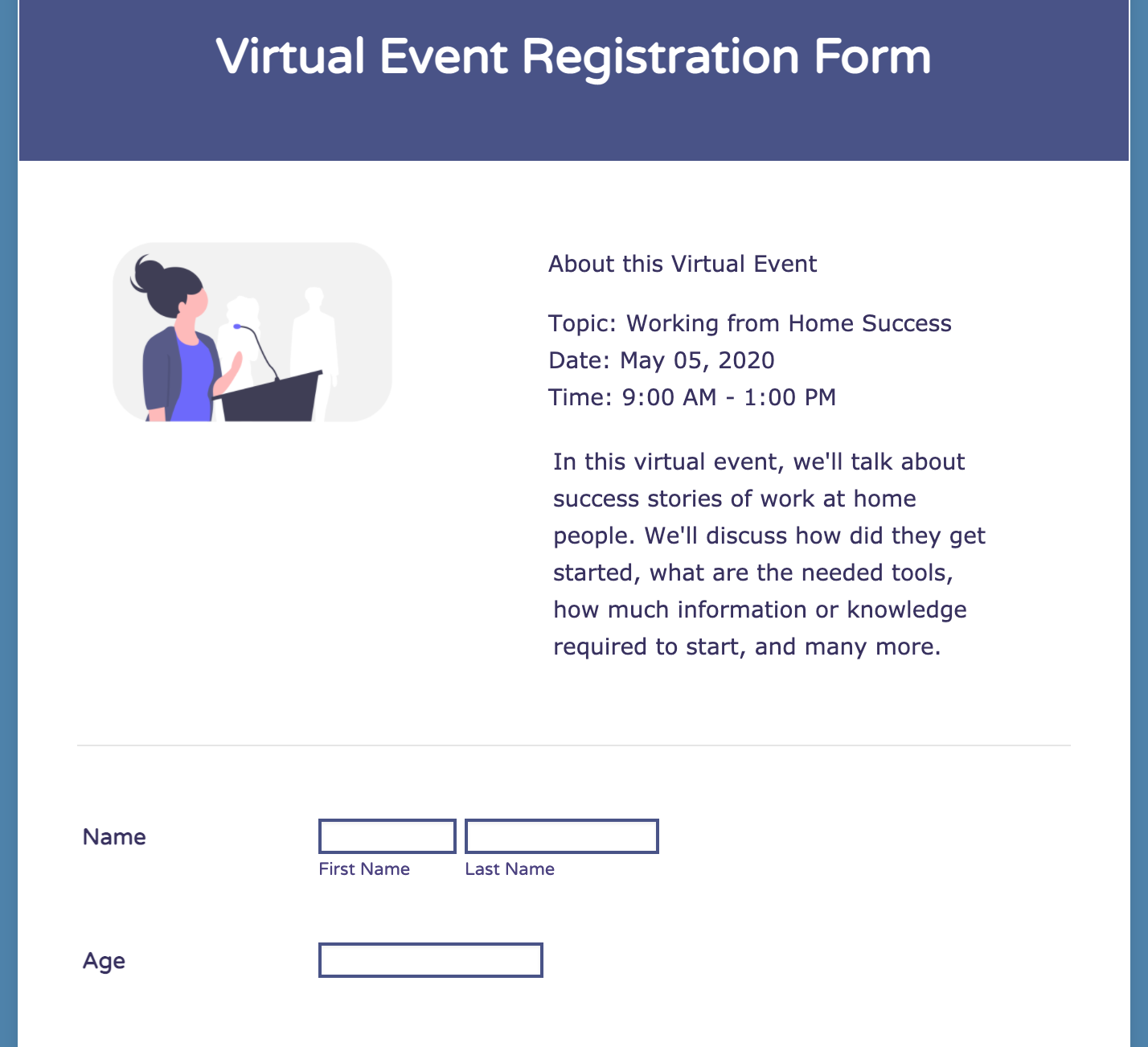







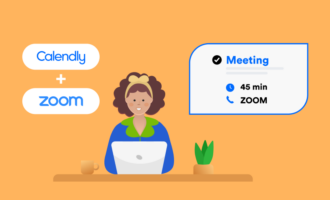
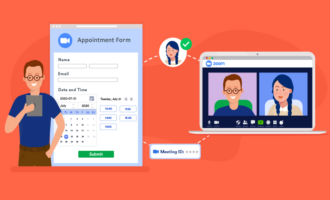



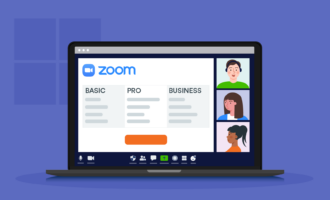
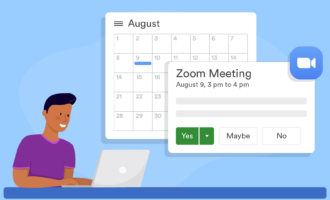

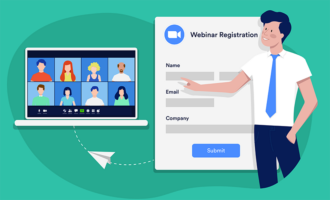
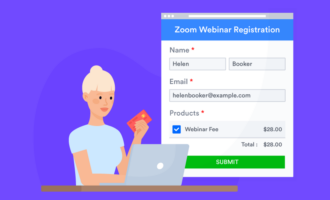

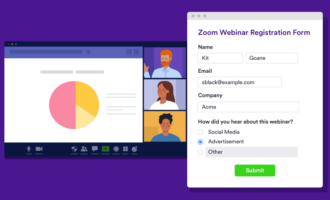






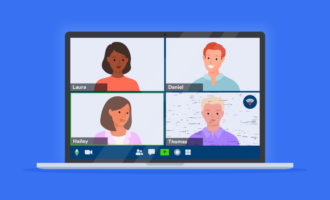
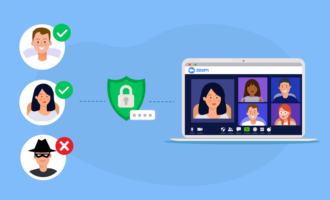

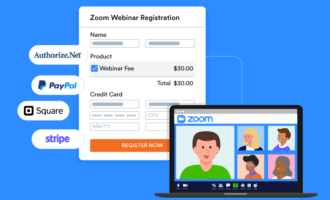
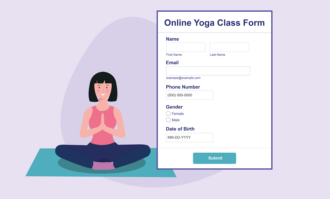
Send Comment: